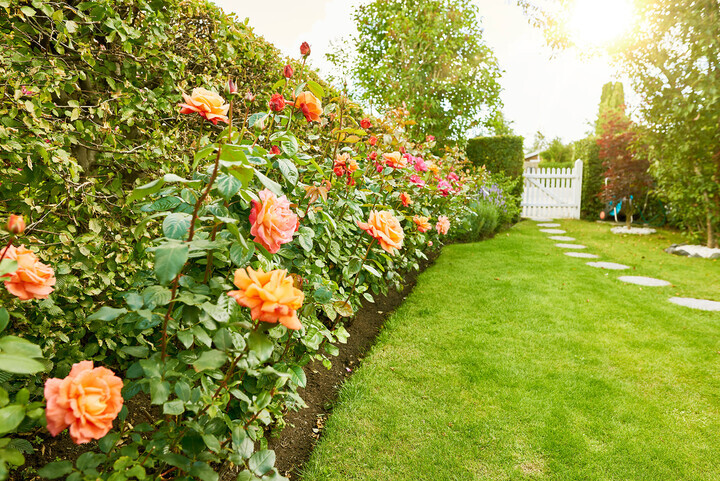Understanding the basics will help you choose the correct plants right off the bat.

There is nothing like the joy of spending time in your garden—especially if it's a garden full of thriving plants, mapped to perfection across your yard. But getting to this point doesn't happen overnight; in fact, getting there at all can be a daunting challenge. The first step in building a beautiful outdoor retreat is selecting the correct plants for your space. To help you do so, we spoke to a garden expert to find out exactly what you need to know about your yard and garden before you decide what to plant (and where to plant it).
Understand Your Yard
Before you purchase any plants, or even begin planning your garden's layout, you should spend at least a full week monitoring how and where the sun falls throughout the day. "You will learn which parts get morning light, afternoon light, eight hours of full sun, or stay mostly shady," says Ashley Greer, owner of Atelier Ashley Flowers. Light is one of the most important things to consider before you make a purchase, since every plant comes with a set of specific conditions that help it thrive. "A plant that likes partial shade may do okay in full shade, but it will not perform to its utmost potential," she says. "And if you plant a shade shrub in full sun? It will most likely die within a few weeks."
Get to Know Your Soil
Because every plant has different requirements, you need to research its eventual living environment: your soil. "Not all dirt is created equal, and you may need to add some nutrients to help keep your plants fed and happy," notes Greer. Since not all soils are the same (there are many different types), not all soils will hold water the same way. Determining your soil's drainage capabilities is something you need to understand before you add live material. "The roots of your plants have needs, and one that likes dry roots will not tolerate a swampy environment," she continues.
Jon Roethling, the director of Reynolda Gardens of Wake Forest University, agrees, adding that it's also important to know your hardiness zone and your soil's pH. "Is your soil acidic? Too much so or not enough?" he notes. He also recommends researching your desired plants' mature sizes to ensure you have enough room for them down the road.
Get Ready to Invest
According Roethling, it's important to view plants like trees, shrubs, and perennials as an investment. "Do your research so you can get a good return," he says. "And while a deal on a plant is always enticing, sometimes cheaper doesn't necessarily mean better, especially if this is going to be a long-term plant such as a tree for your yard or foundation plantings."